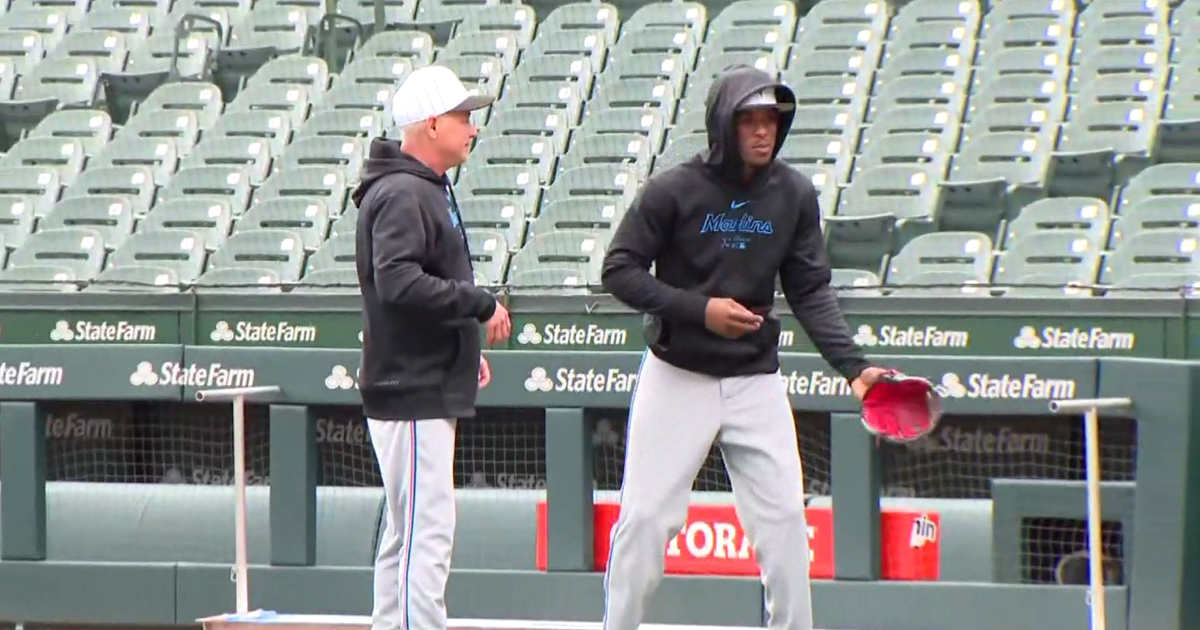Gabriel: Inside The NFL Draft Room & Its Changing Scenarios
By Greg Gabriel--
(CBS) Starting Thursday, the bulk of work done by 32 NFL teams will be in what's referred to as the draft room -- or war room by some. When I first came to Chicago in 2001, the draft room was referred to as the war room, but that changed on April 22, 2004.
On that day, Bears general manager Jerry Angelo, the college scouts and myself were going over some players when Angel's assistant walked in to say that one of our scouts, Ted Monago, had an urgent phone call from his mother.
We took a break from the meeting so Monago could talk to his mother. It was about 10 minutes later when he came back into the room with a stunned look on his face. I asked him what was wrong and he muttered, "Pat died."
My first words were "I'm sorry," quickly followed by "Who was Pat?" He then said Pat Tillman. Monago and Tillman had a strong friendship dating back to when both were teammates at Arizona State. Following college, Monago pursued a coaching career and then scouting while Tillman went on to an excellent career as a safety for the Arizona Cardinals.
Football was important to Tillman, but so was serving his country. In May 2002, Tillman enlisted in the U.S. Army. Less than two years later, he was a casualty of war. Out of respect for both Monago and Tillman, we did not meet for the rest of that day. Also out of respect for both, I sent out a memo to the rest of the Bears coaching and scouting staff that from that day forward, the term "war room" wouldn't be used again at Halas Hall. We were to refer to our draft room as just that -- the "draft room." To this day, every time I hear the term "war room," I cringe, as it brings back memories of that horrible day. On top of that, no one in the NFL is at war. We play and work in a business that's nothing more than a game, a form of entertainment.
Not all 32 draft rooms are the same. When I worked for the New York Giants, the scouting staff, coaching staff along, general manager and team owner were in the room for the entire draft. When I was with the Bears, the people in the room consisted of the scouting staff, the general manager, the head coach, team CEO Ted Phillips and some of the McCaskey family. The coaching staff was available to come in to the room at any time and answer any questions that we may have on a player.
I was a consultant for the Philadelphia Eagles in 2013. In their draft room was no more than 10 people, which included general manager, head coach, the player personnel director, scouting director, pro scouting director, head trainer and owner. The Eagles' draft room wasn't that large, and the remainder of the scouting staff was in a conference room adjacent to the draft room.
The walls of most draft rooms are similar. On one wall is a board that has the players ranked from best to worst, regardless of position. That board is the final list of ranked players and in many cases consists of around 75 to 125 names, depending on the team. The players the team will draft across the three-day event comes from that board.
To be clear: The list isn't one of the top 100 players. Rather, it's a list of players that the team is interested in drafting during the three days of the draft. Some of those players are "A" level players who you like in the first and second round. Then there are "B" level prospects for the third and fourth round and "C" level players the rest of the draft.
If the team is lucky, not only will they get all their drafted players from this board but also a few undrafted free agents.
On an adjacent wall is a board that has players listed by position, best to worst. This board has all the players at each position that the team has a draftable grade on. On a third wall is a board that has all 32 teams. As each of those teams selects a player, a card with the drafted player's name, position and grade gets placed in a column under that team's name. That way, you always have in front of you what each team has done during the draft.
1st round
When the NFL went to a three-day draft format, it made to job of personnel people a lot easier. On Thursday, the first day of the draft, a high percentage of the thought process in the draft room is just on that first-round pick. In the meetings leading up to the big day, scouts and coaches go over all the players and scenarios for draft weekend, especially the first round.
This year, in the case of the Bears holding the No. 11 pick, the team most likely has a list of three or four players who they've already prioritized. When it comes time for the Bears to select, the player with the highest priority is the one taken. If the team has a thought about trading up or down, it has already been thoroughly talked about and a plan has been put in place to accomplish those goals.
In the case of moving up, a team knows exactly how much it will cost to make that move. A trade up is always for one specific player, and the team has already previously determined how far up it will go to get that player. The club also has a really good idea what the cost will be. Just before the foe that drafts in the slot is ready to pick, the team looking to move up will call to see if a trade can be consummated. In the days leading up to the draft, a preliminary call has already been made, so each side knows what to expect. If the team holding the higher pick is ready to move down, the deal is made.
There's a flip side to this too. When I worked for the Bears and we were interested in moving down, we made calls to a number of clubs to inform them we may be willing to move back in the first round. On draft night, if any of those teams were looking to move up, they would start calling a few picks before the Bears were on the clock. If the players the Bears had coveted were already selected or if all (or nearly all) were still on the board, that's when moving back a few slots would make sense and be a serious discussion.
Day 2
The beauty of the draft being a three-day affair is there's plenty of time to prepare for each day. Teams now have all day Friday to get ready for the second and third rounds, which are held in the evening.
During this time, each club reviews its board and prepares for the different scenarios. This year, the Bears have the 10th pick of the second round. They know what they want to accomplish as far as acquiring players at certain positions. Knowing what was acquired in the first round will help create the plan for Day 2.
Often, looking at the strength of the board after the first round helps a team determine what it will do in the second and third rounds. If a team hopes to acquire players at two different positions, it will look at the board and see which of the two positions has more depth to it. The position with the weaker depth may be where the team chooses to select a player from in the second round. Of course, value also comes into play -- you never want to drop down in value to select a player at a need position.
You never know how the draft is going to play out, so a team may well come out of it without all needs being fulfilled. That happens because the draft just didn't fall the way you had hoped. A well-prepared club can adjust to those changing scenarios.
Day 3
Just like with Day 2, the draft board is adjusted a bit depending on what a team's selections were in the first three rounds. Once you get to the fourth round, a team has to draft for value, regardless of position.
If there's a player who stands out on the board when it's your turn, then you almost have to select that player. Not taking the best player at that time defeats the whole purpose of scouting. Hopefully the best player is a player at a need position, but if he isn't, it doesn't matter. The draft is about acquiring talent.
In the 2015, the Bears selected running back Jeremy Langford in the fourth round and safety Adrian Amos in the fifth. Langford was a huge contributor, and Amos was a season-long starter.
In order to build a championship-caliber team, you have to find players like that on Day 3. Getting contributors late in the draft is the difference between a strong scouting department and a weak one. My bet is the staff that Bears general manager Ryan Pace has put together is strong.
Greg Gabriel is a former NFL talent evaluator who is an on-air contributor for 670 The Score. Follow him on Twitter @greggabe.



